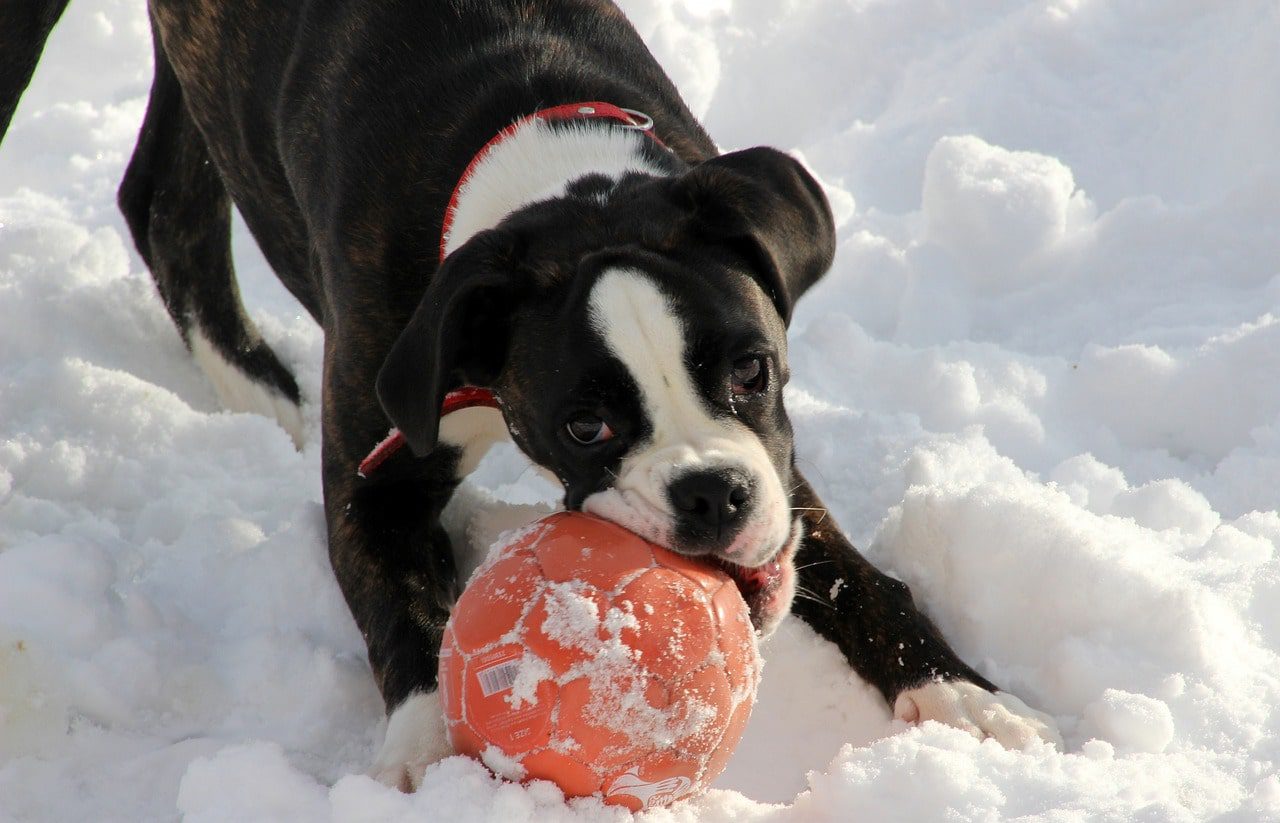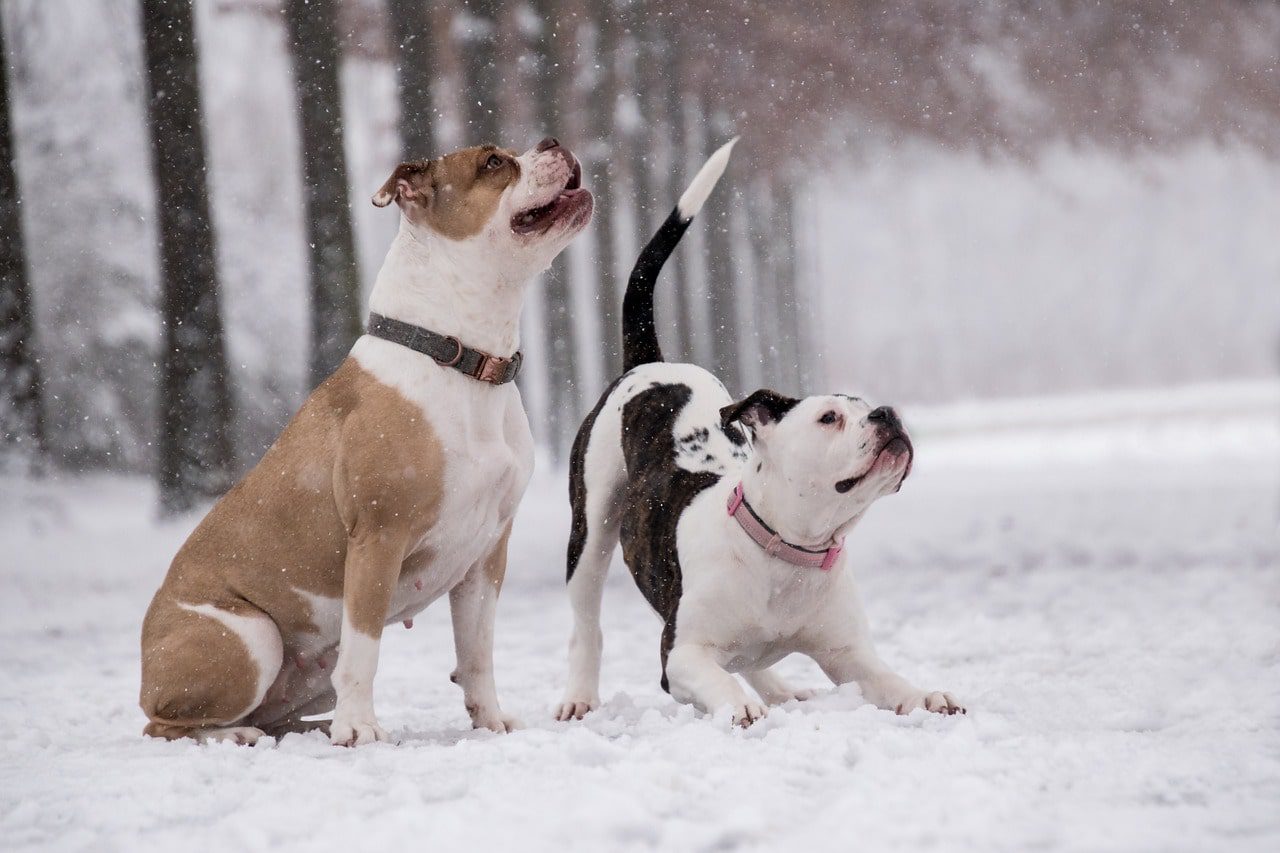Are you the proud owner of a Boxer Breed Training ?

You can have a great deal of pleasure with this active and devoted breed, but it’s also crucial to make sure they receive the right training. Having proficiency in Boxer breed training methods will enable you to reach your maximum potential as content and obedient friend.
We’ll walk you through the conditioning process of your Boxer in this post, so you can create a strong bond and take charge of the pack. We’ll go over everything, from simple obedience orders to advanced stunts.
Learn the techniques that will let you resolve typical behavior issues and position your Boxer for success. Our training techniques are positive and reward-based, so both you and your pet may enjoy an effortless and joyful adventure together.
We’ll also offer advice on how to keep your boxer happy and healthy, including socialization, physical activity, and mental stimulation.
The Boxer breed’s great activity and at times, stubborn disposition shouldn’t discourage you. Your Boxer can become a docile and pleasant friend with the correct attitude and regular training.
Now let’s get going and help your Boxer reach its maximum potential!
Understanding the Boxer Breed Training
The Boxer breed is renowned for its vibrant nature, which combines a high level of activity with steadfast devotion and love. German Boxers have a long history; they were originally developed for various uses, including guarding, hunting, and even bull-baiting.
Modern Boxers have transformed into cherished family friends, recognized for their minds, athleticism, and dedication to their loved ones, despite their frightening history. Working-class beginnings give Boxers a strong physique and an energetic personality. Their powerful build and unique square muzzle give them an air of power and quickness, which is in line with their historical responsibilities as skilled hunters and guardians. But they are kind and loving dogs at heart, which makes them ideal family pets of all shapes and sizes.
In addition, Boxers develop strong bonds with their owners and frequently show steadfast devotion and love for their human family members. They have a track record as being psychic, able to sense their owners’ feelings, and offer comfort and company when they’re in need.
The Importance of Early Training for Boxers
For Boxers to transform their endless energy into constructive behaviors, early training is essential. Establishing the groundwork for a well-mannered companion begins as soon as you bring your Boxer puppy home with training. The most important things in modifying their behavior are uniformity, tolerance, and reinforcement.
A solid link between you and your dog can be developed by consistent, patient, and constructive criticism of their behavior. You can lay the foundation for a lifetime of empathy and companionship by establishing clear expectations and boundaries early on. You may assist your Boxer in becoming a loyal and polite family member by starting training them early on.
Basic Obedience Training for Boxers
A Boxer needs basic obedience instruction to become well-mannered. Set limits and foster genuine interaction between you and your dog with commands like sit, stay, come, and down. These basic instructions assist your Boxer to understand what is expected of them in various scenarios and serve as the foundation for more advanced training.
Training sessions should be brief, usually lasting 10 to 15 minutes, in order to keep your Boxer interested and focused. To keep your Boxer breed training eager and inspired to learn, make training enjoyable by adding toys, food, and lots of praise. To guarantee that your Boxer obeys in real-life situations and to reinforce learning, exercise these commands frequently in different situations. Consistency is important.
Advanced Training Techniques for Boxers
Advanced training methods give fascinating chances to strengthen your relationship with your Boxer breed training, while improving their mental and physical capabilities. Beyond mere conformity commands like heel, fetch, and agility, training offer mental and physical challenges. While fetch feeds your Boxer’s innate retrieving impulses, heel trains your dog to walk gently by your side. By introducing barriers and challenges, agility training enhances confidence and coordination.
These cutting-edge techniques improve your Boxer’s life and fortify your relationship as you work to achieve common objectives. Your Boxer breed training will flourish in learning these sophisticated commands with time, practice, and reassurance, demonstrating their savvy and agility and enhancing their bond with their loving owner.
Boxer-Specific Training Challenges and Solutions
Given their unlimited energy and independent nature, Boxer breed training might have special training problems. Leash tugging, jumping, and stubbornness are frequent issues that Boxer owners may face. Use strategies specific to the Boxer breed in order to properly handle these issues.
Training aBoxer breed training requires a great deal of patience because of their independent personalities, which can result in resistance at times. Setting boundaries and reinforcing desired behaviors are made easier by using consistent training techniques and expectations. Techniques for positive reinforcement, like giving encouragement or praise for good behavior, can motivate Boxers to repeat positive behaviors.
Redirecting their attention and teaching other habits are key tactics for curbing their jumping and leash-pulling. Giving them instructions like “sit” or “heel” encourages them to focus their energies wisely while reiterating your commanding position. Plus, cognitive stimulation and lots of movement help them burn off extra energy, which makes exercises more fun and effective for both you and your Boxer.
Training for Particular Behaviors: Barking, Leash Pulling, and Jumping, among Others.
It is crucial to train your Boxer for specific activities like pulling on the leash, jumping, and excessive barking if you want him to have decent manners. Specific measures can successfully change these behaviors and encourage better options.
Desensitization techniques might teach your Boxer breed training to walk calmly beside you when it comes to pulling on the leash. This entails praising them for pulling free while progressively introducing them to the feeling of stress on the leash. Reorientation methods, such as pausing and turning around when your Boxer pulls, can also be beneficial.
Teaching your Boxer a substitute behavior, such as sitting or presenting a toy when greeted, can help curb leaping through. The long-term discouragement of jumping behavior might also come by consistently ignoring it or averting it.
Finding the root logic of excessive barking, such as boredom or anxiety, is important. Barking can be decreased by addressing the root cause with mental stimulation, exercise, and environmental enrichment. You can also train your Boxer to bark less by rewarding calm behavior and teaching a “quiet” command.
Equipment & Boxer breed training

To maximize your Boxer’s training experience, use the right training tools and apparatus. During walks and training sessions, a strong leash-and-harness combination offers control and safety, especially for strong people.
In addition to being useful as incentives, interactive toys keep your Boxer active both mentally and physically, which boosts the quality and effectiveness of training sessions. Treat-dispensing toys and solving mystery toys will help your Boxer breed training focus and use his or her energy.
Furthermore, take into account utilizing devices like training whistles or clickers to accurately indicate desired behaviors, which will improve communication between you and your Boxer. Selecting training materials and equipment that meet your Boxer breed training unique requirements and preferences is crucial to a happy and fruitful training session for both you and the dog.
Training Pointers for a Happy and Loyal Boxer Dog
The foundations of effective Boxer training are patience, consistency, and positive reward. Your Boxer will better grasp what is expected of them if a consistent routine and clear expectations are established. Treats, praise, and playtime are examples of positive reinforcement methods that you can use to reward desired behavior and motivate your Boxer breed training to keep learning. Steer clear of punishment-based approaches, as they could undermine trust and create unfavorable results.
Above all, throughout the training process, continue to be patient and understanding. Since each dog learns variously, exercise patience while appreciating any accomplishments, no matter how tiny. You may foster a contented, courteous, and strong bond with your Boxer breed training companion by being consistent, providing positive reinforcement, and offering them lots of affection and empathy.
Final Remarks: Savoring the Rewards of a Qualified Boxer
Owning a well-trained boxer will provide you with plenty of advantages, but training takes time and work. A few of their benefits include superior behavior and improved communication. In addition to being pleasant to be around, a well-trained Boxer breed training helps to cement the connection you have. A deeper connection is fostered by honest debate and understanding, which enhances both of your lives.
Furthermore, a well-trained Boxer is more efficient at surviving a variety of circumstances, including a leisurely stroll in the park or a trip to the vet. They are delightful friends in all circumstances because of their obedience and manners.
In the end, your training investment will pay off with a happier, more pleased Boxer companion. With diligence and dedication, you may reap the many benefits of having a pleasant and civilized Boxer by your side.
FAQs:
Are Boxer dogs trained?
Since boxers are big, muscular dogs, it’s crucial to start their training early on. They want to learn. It will provide them With Ough mental stimulation to keep them out of trouble.
What interesting facts exist regarding Boxer dogs?
During World War I, the boxer breed was used primarily as a working dog, serving as attack dogs, security dogs, transmitters, and pack carriers. After the Second World War, troops returned their dogs to their homelands and incorporated them into their homes, which led to an increase in the breed’s favor.
How long does a Boxer dog live?
The Boxer breed has a normal lifespan of 11–13 years and is naturally healthy.
How should Boxer breed training be cared for?
Normal Care, Dietetics, and Exercise:
She has low grooming needs. Brush her coat as desirable, at least weekly. Boxer breed training normally have good teeth, and you can keep them faultless by scrubbing them at least twice a week! She can have a high target drive, so she needs to be leash-walked and a sturdy boundary is a must.


Pingback: Barking Up the Right Tree: 8 Fascinating Facts About Boxer Dogs - DognPet